#grove snail
Text

Image by beauty_of_nature from Pixabay
30 notes
·
View notes
Text
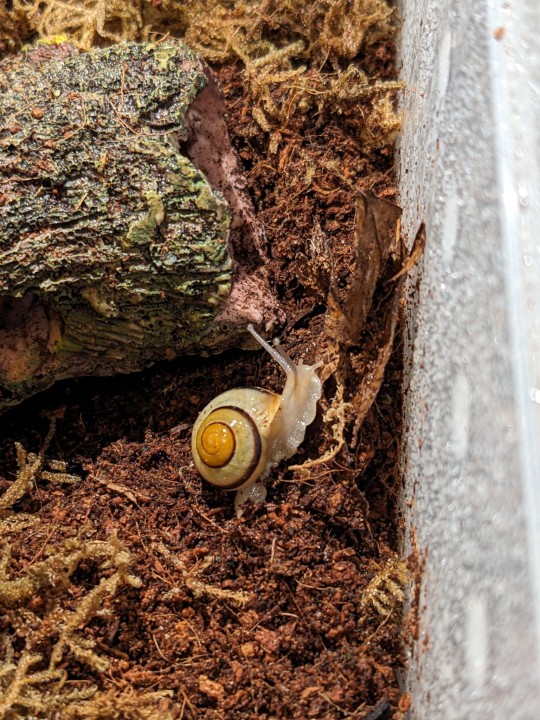

Cepaea nemoralis - our grove snail has gotten so big
18 notes
·
View notes
Photo

Grove Snail (Cepaea nemoralis)
Family: Helix Snail Family (Helicidae)
IUCN Conservation Status: Least Concern
Also known as the Brown-Lipped Snail, the Grove Snail is native to northern, western and central Europe, and is among the most common gastropods in its range. It inhabits a wide range of habitats (including forests, grasslands, sand dunes, farmlands and gardens) and is able to survive in significantly colder climates than many other snails by entering a hibernation-like state when faced with low temperatures or seasonal scarcities of food. Grove Snails are primarily herbivorous and feed on dead or dying plants, and as they rarely eat healthy plants they do not typically cause trouble for farmers and gardeners as other herbivorous gastropods often do. Like almost all terrestrial snails, Grove Snails are hermaphrodites (meaning that every individual is capable of producing both sperm and ova) and cannot self-fertilize, meaning they must mate in order to reproduce. During the mating season, which lasts throughout most of the summer and early autumn/fall, any two adult Grove Snails that encounter one another will engage in a half-courtship-half-battle behavior, attempting to stab hormone-laced darts made of calcium carbonate (known as “love darts”) into their mate/opponent - whichever individual is hit by a love dart first will begin to produce a chemical that makes their reproductive tract more hospitable for sperm and will then have their eggs fertilized by the snail that hit them. When mating both individuals would prefer to fertilize their mate’s eggs as the process of developing and laying fertilized eggs requires far more nutrients than it takes to fertilize eggs, but it is entirely possible for a single Grove Snail to essentially become both a mother and a father throughout its life. The eggs of a Grove Snail, which are white and spherical, are laid in clutches of 30-50 and hatch after around 15-20 days, with newly hatched individuals taking up to 3 years to reach maturity. The colours and patterns on the shells of this species vary enormously between individuals (with yellow with black stripes, pure yellow, pale white, yellow with brown stripes, brown with white stripes and pure brown all being common), and when threatened Grove Snails can retract their entire body into their shells (although larger predators, such as the Song Thrush, may be capable of simply smashing the shell.)
--------------------------------------------------------------------------
Image Source: https://www.inaturalist.org/taxa/48586-Cepaea-nemoralis
#Grove snail#Grove Snails#snail#snails#zoology#biology#malacology#limacology#animal#animals#wildlife#european wildlife#molluscs#mollusks#gastropod#gastropods#invertebrates#invertebrate
59 notes
·
View notes
Text
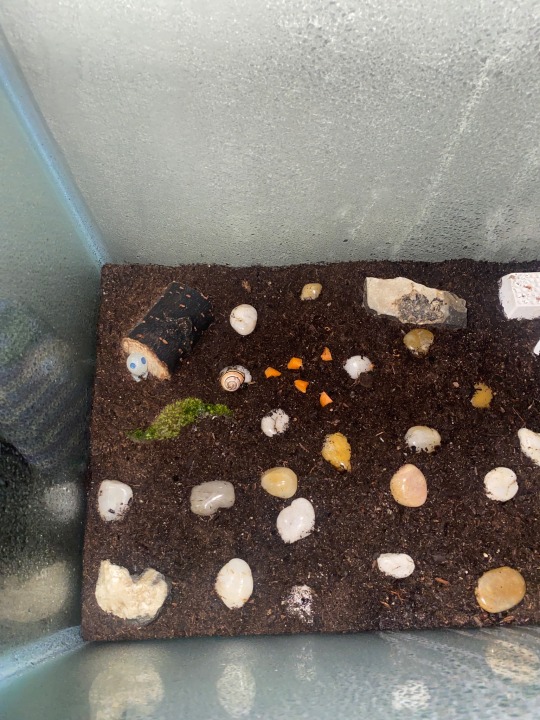
Cinnamon! Gave them new carrot
3 notes
·
View notes
Photo




Cepaea nemoralis (Grove snail) and the shell of Neverita lewisii (Lewis's moon snail)
A garden is not just a space for pretty flowers, it’s also full of ‘critters’. Exhibit A; the Grove snail. This little land snail is native to Europe and appears prominently on The Invasive Species Council of British Columbia’s list of nasty imports. However, the shell it’s climbing over is from a moon snail we picked up twenty years ago on a beautiful, deserted beach in Haida Gwaii (formerly known as the Queen Charlotte Islands).
The Grove snail has been of interest to evolutionary biologists because the bright bands of color must attract predators. How did this trait evolve? As a survivor of several hundred dancefloors in my youth (and thinking back to some of the garish outfits I wore) I have an obvious explanation - “It’s because ‘chicks’ dig it!” Any more questions?
60 notes
·
View notes
Text
You are going to look at lemonade. They like to eat sticks
2 notes
·
View notes
Text

Little cutie...... Moved it to a more snail friendly spot than hot scorching gravel!
12 notes
·
View notes
Video
Grove Snail by Oliver Andrews
Via Flickr:
A grove snail out for a wander in the rain.
#brown-lipped snail#canon#canonuk#cepaea nemoralis#fauna#garden#grove snail#invertebrate#invertebrates#minibeast#minibeasts#mollusc#molluscs#nature#outdoors#snail#snails#wildlife#flickr
4 notes
·
View notes
Text

loving the texture of this wild C. nemoralis I found at an old mortar battery.
5 notes
·
View notes
Text
Today the snabies graduated to the adult tank! Seems like a bad year for my season affect disorder so everyone being in one enclosure will hopefully make it easier to clean. Especially since Chungus is bigger than the wild caught adults? And it looks like some of them might have the brown lip on their shells already - not sure.
Pics taken moments before disaster:

Oh dear...we appear to have a snile up starting near the food dish

It's apparently has to get worse before it gets better...
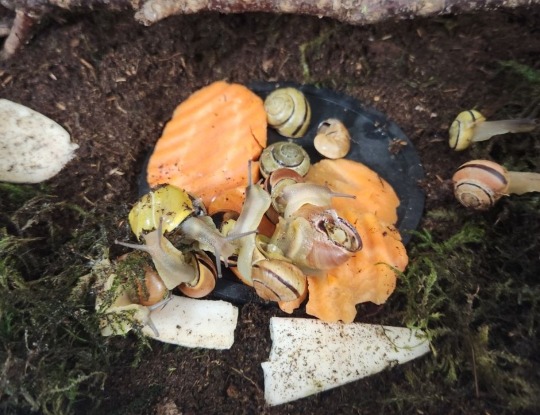
There's not much I can do other than give them time and space to sort things out, which should only take a few minutes.
0 notes
Text

The Backyard Bestiary. Written by Ton de Joode and Anthonie Stolk. Illustrated by Kees de Kiefte. 1982.
Internet Archive
415 notes
·
View notes
Text
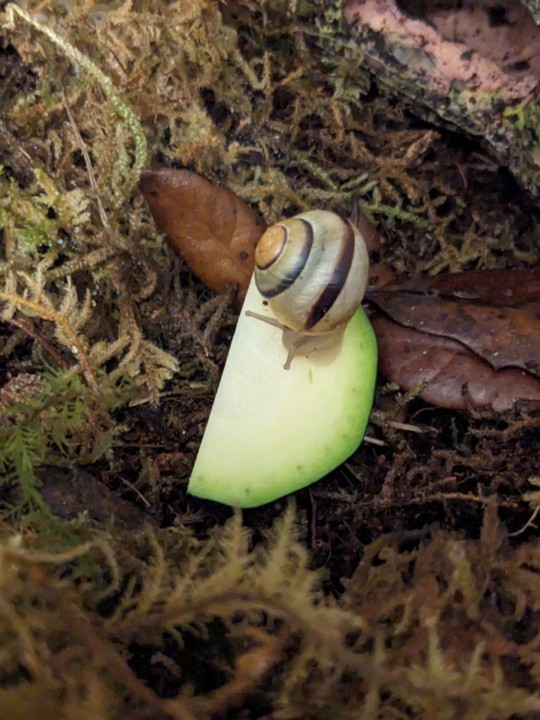
Cepaea nemoralis | fresh zucchini in the snail tub
12 notes
·
View notes
Text
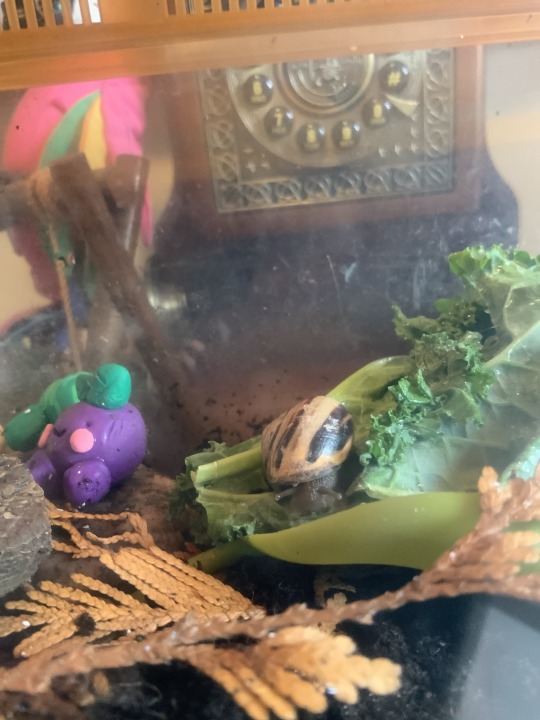
Snail fun fact; every snail besides salt water snails are intersex :]
3 notes
·
View notes
Text
my sister, trying to think of examples of fictional orphans without parental figures/found family: have you ever seen goofy's parents??
me: rightfully cracking up and absolutely losing it
#ASDFG /SHE'S/ GOOFY!!#she was talking about how she disliked the kids in the grove in bg3 and i argued that maybe they act up and steal bc they don't have#parents to look out for them and guide them#and my sister proceeded to try and think of orphans in media to argue back and i kept shooting them down and THEN#she hit me with the goofy line and i lost it ASDFG#i love my sister she's so silly and i'm so happy she's having a good time with the game :' ))#also sorry for my slowness!! i!! feel like a snail more than ever but i'm trying!!#get ready to ramble | ooc
6 notes
·
View notes
Text
bug tour!
[as of 6/19/22]
Disclaimer - all creatures are kept and handled with the utmost care and respect and given the best husbandry possible - that being said, more experienced keepers are strongly encouraged to comment any critiques or advice!
isopods -
Porcellio laevis “Dairy Cow”
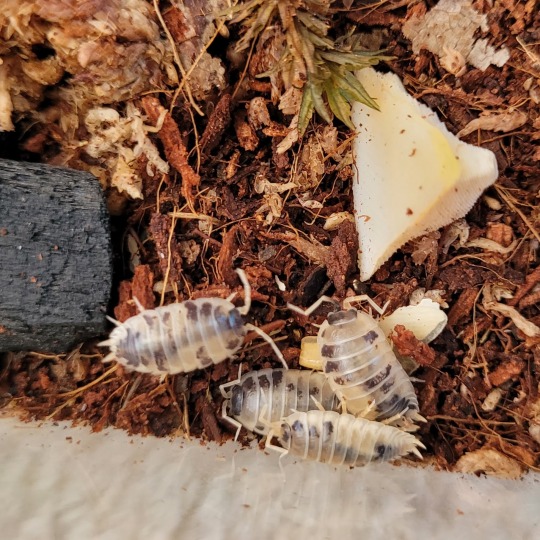

Armadillidium klugii “Slano”

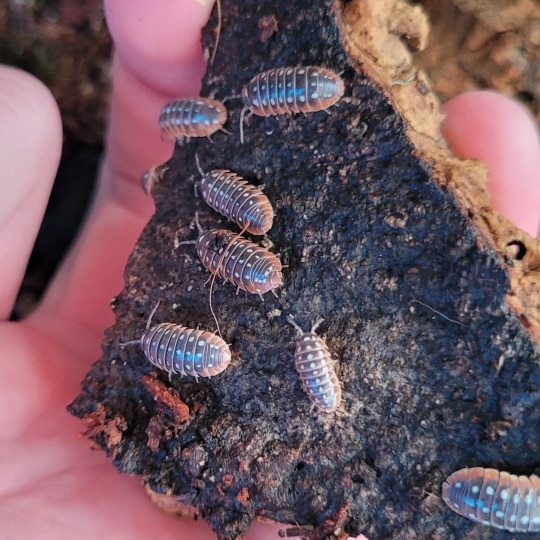
Cubaris murina “Papaya” (feat. some babies!)
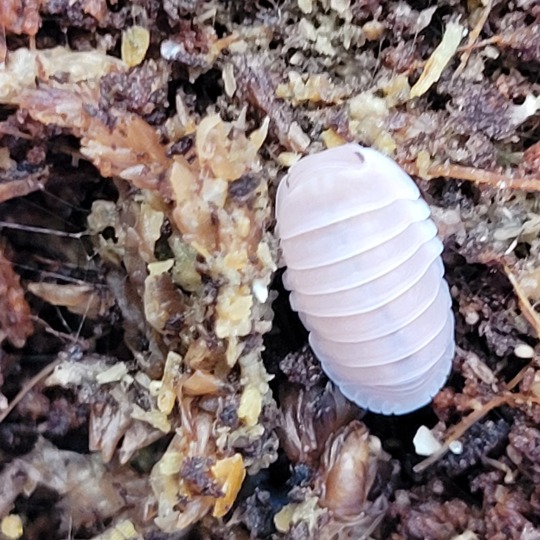
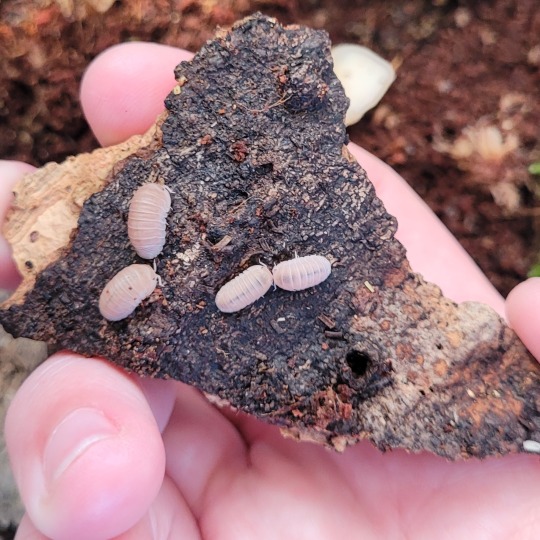

Porcellio sp. “Sevilla”
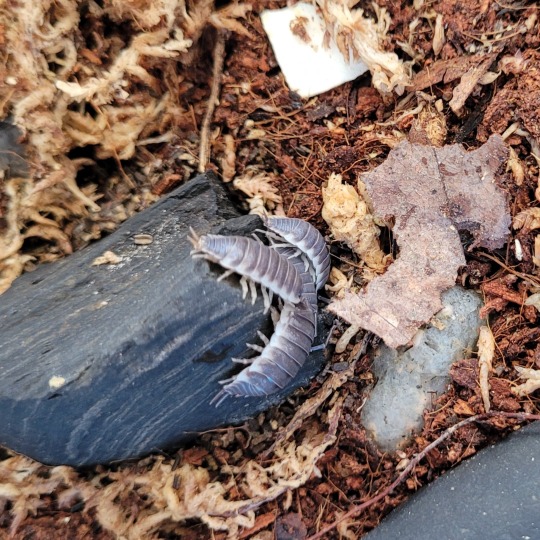

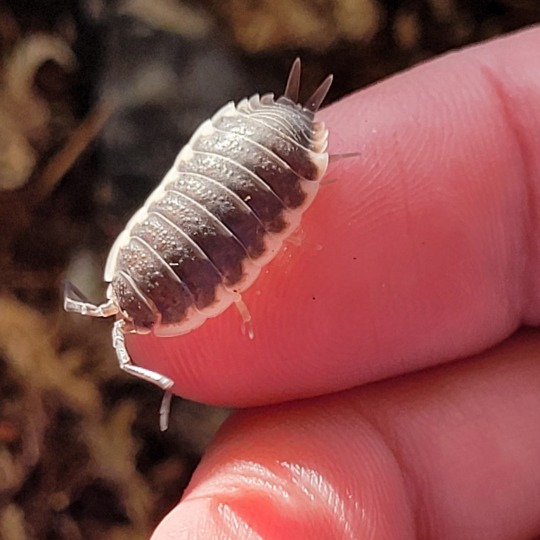
Misc. wild Armadillidium (vulgare, nasatum) with some millipedes! (not pictured)
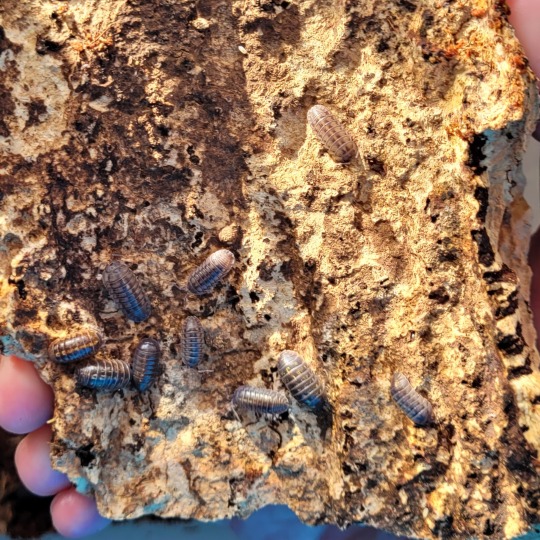
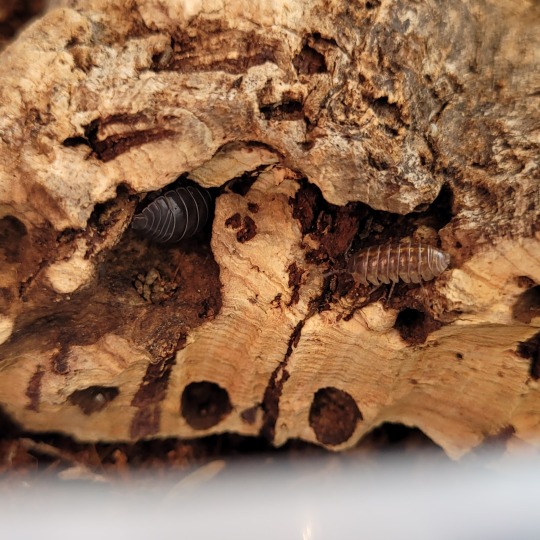
other -
Two Grove Snails and way too many* Amber Snails
(*I am aware the enclosure is overstocked and these snails need more space, it was initially only the two Grove Snails and then I suddenly had the Ambers dumped on me - I will be either rehoming or rehousing them as soon as possible!)
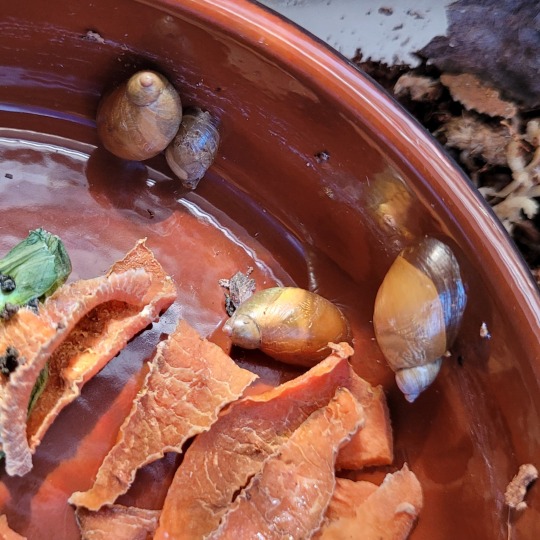
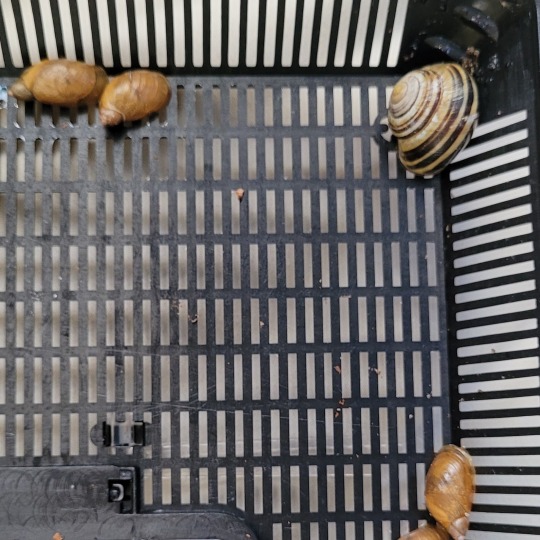


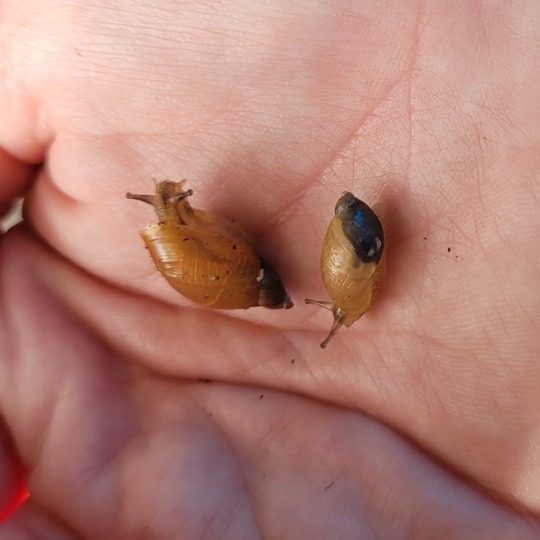
and last but not least, my two beloved Blue Death Feigning Beetles! Female is the larger one on the right, male is the smaller one on the left dramatically leaning against the side
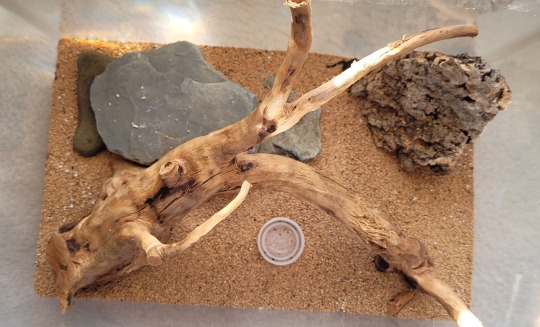


That’s all of them for now and probably for a while, as strong as the “buy more bugs” itch is, I need to keep my numbers low so moving into my dorm isn’t too horrible. Hope you guys enjoy :)
#bug.txt#long post#my bugs#invertabrates#bugblr#blue death feigning beetle#isopods#gastropods#snails#grove snails#amber snails#porcellio laevis#dairy cow isopod#porcellio sp sevilla#armadillidium#klugii#idk how else to tag this uhhhhhhh#invertblr#bug keeping
17 notes
·
View notes

